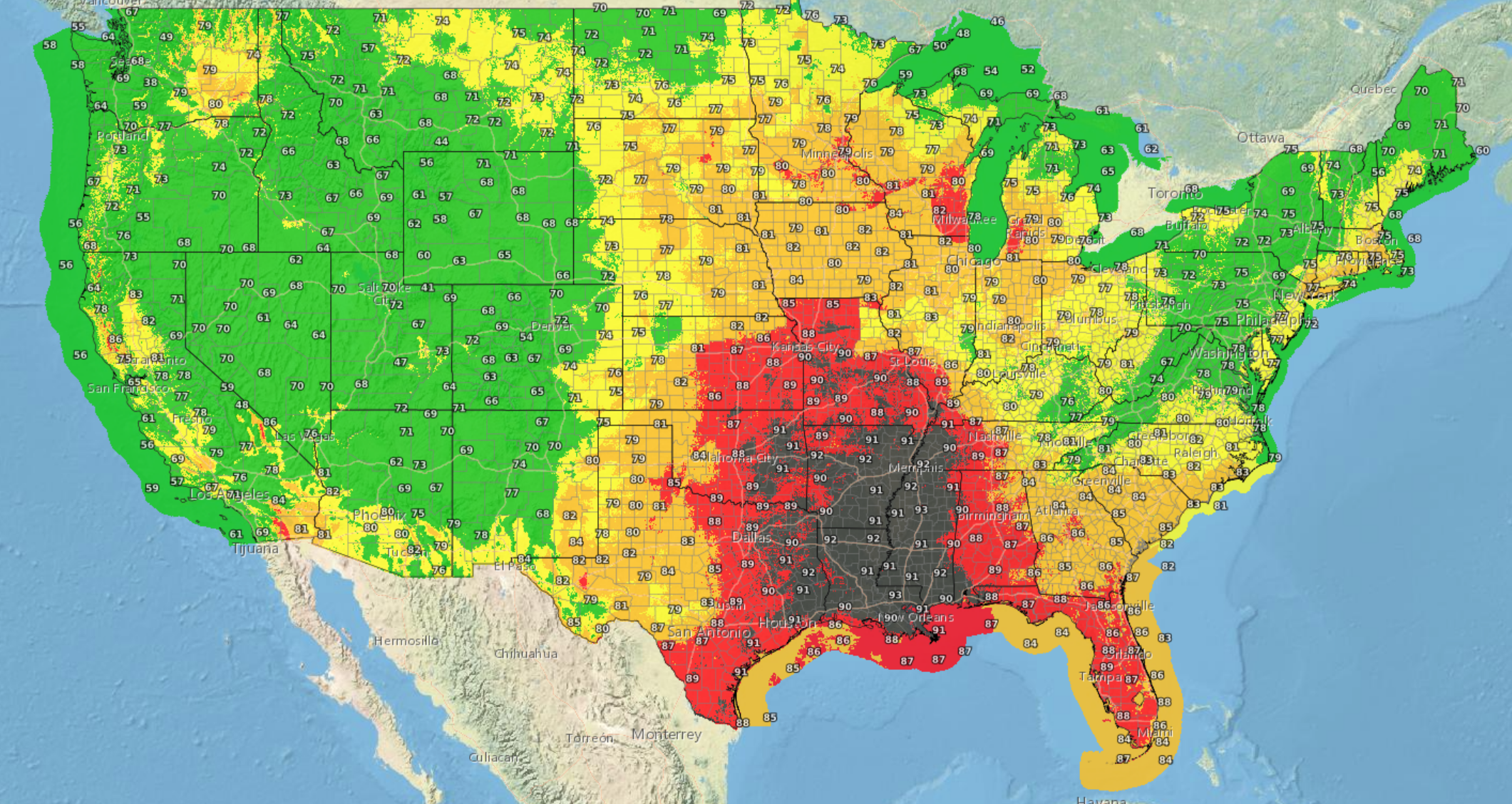
..In the U.S, readings of a key indicator of heat exposure danger have reached the highest possible threat level in multiple southern states, as well as in a few states in the Midwest.
If you read the news there is a lot of talk about wet bulb temperature used as a way to measure this extreme heat.
What is Wet Bulb Temperature?
Unlike the heat index, which tells you how the human body would feel under shade, the wet bulb temperature indicates the expected stress on the human body when it is in direct sunlight by measuring the effect of temperature, humidity, wind speed and solar radiation.
When it’s hot, humans sweat to cool off, but if the humidity is also high enough there’s a point at which sweat loses its cooling effect.
The upper limit that humans could withstand was thought to be 35C at 100% humidity (or 95 F at 100% humidity), according to a 2010 study. New research out of Penn State University’s Noll Laboratory found that the critical limit is in fact even lower at 31C at 100% humidity (or 88 F at 100% humidity).
How do you measure wet bulb temperature?
Wet Bulb temperature can be measured by using a thermometer with the bulb wrapped in wet muslin. The adiabatic evaporation of water from the thermometer and the cooling effect is indicated by a “wet bulb temperature” lower than the “dry bulb temperature” in the air.
The rate of evaporation from the wet bandage on the bulb, and the temperature difference between the dry bulb and wet bulb, depends on the humidity of the air. The evaporation is reduced when the air contains more water vapor.
How hot does it feel? According to Wikipedia, a wet-bulb temperature of 32 °C (90 °F) is equivalent to a heat index of 55 °C (131 °F) ( https://en.wikipedia.org/wiki/Wet-bulb_temperature ).
